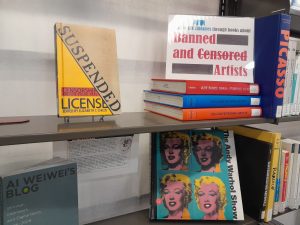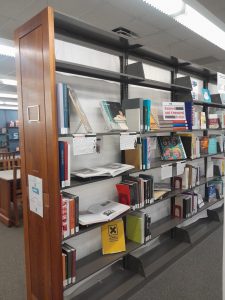By Guest Author, Mairin Plant
As with books and other text-based materials, visual art has long been a popular target for censorship. Historically, both private groups and public leaders have leveraged their power to ban works of art from public view, alter their contents, or brand them as somehow harmful to spectators for political, social or religious reasons.

Some acts of censorship are directed at individual artworks by otherwise renowned artists. Michelangelo, to name one famous example, grappled with heavy restrictions and post hoc alterations while painting the Sistine Chapel, which inspired him to paint himself into the Last Judgement as St. Bartholomew’s flayed skin. Artists such as Franscisco de Goya, Gustav Klimt, and Pablo Picasso also encountered proscriptions during their careers and after their deaths.
Other censorship campaigns involve the elision of certain viewpoints altogether. In the 20th century, prohibition of abstract, expressionistic, or otherwise experimental art in favor of realistic painting and sculpture emerged as a prominent form of social control in the authoritarian regimes of the Soviet Union and Nazi Germany. Each of these regimes framed nonrepresentational art as a corrupting influence over the public and offensive to the presumed sensibilities of model citizens. The Nazi party specifically pointed to modernist art as evidence of a Jewish assault on German values.
In the 21st century, bans and censorship still proliferate. David Wojnarowicz, an artist who initially faced suppression in the 1980s when the National Endowment for the Arts (NEA) opted to pull funding from an exhibition focused on the ongoing AIDS epidemic, more recently censored when Smithsonian opted to remove several minutes of footage from a film installation in 2010—nearly 2 decades after the artist’s passing.

While art censorship can take on many different forms, discrete instances share themes. Art censorship is inherently elitest: it betrays a lack trust in the public to be able to contend with works of art responsibly or correctly on the part of authorities who seek to restrict what people are allowed to see and absorb.
Explore SHU Libraries through books on banned and censored artists on the second floor of the Walsh Library to learn more!
We welcome you to our information center in the near future, but in the meantime if you need detailed help through the University Libraries. You can book a research appointment here: Research Appointment Site.




